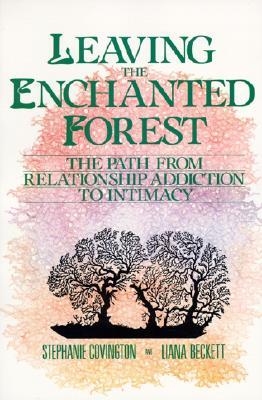The Love Potion: Chemistryand Dependence
On a recent TV talk show, the hostess asked about relationship addiction. She had heard the term a lot lately, she said, but was still puzzled. She asked, 'Just what is relationship addiction? What does it really look like? Is it like any other addiction?" Her guest replied, "Well, it can show up in any number of ways: as an obsession, for example -- a constant thinking, ruminating about the person you're in relationship with. Or there may be a compulsive quality about the behavior -- for instance, making frequent detours just to drive or walk by the partner's workplace. There may also be signs of tolerance increase. In the relationship addict's case, this translates into needing more and more of the other person's presence to feel OK.
"There is a need to protect the supply, which shows up as an unreasonable degree of possessiveness or jealousy. And there may be symptoms of withdrawal. When the relationship addict is separated from the I source, ' he or she may become anxious and depressed." "Hmm...," mused the show's hostess with a frown. "Sounds to me like you're describing love!"
Although we have been socialized to think of this obsession as love, in fact, the compelling allure of its spell has little to do with the depth and enduring quality of true caring. Addiction to another person is what "falling in love" feels like-it is the wild abandon of the enchanted forest. The crucial distinction between relationship addicts and other people who fall in love is that the former expect this fleeting phase of a relationship to become a utopian endless summer that sustains forever the poetry, the ecstasy, and the feelings ofmerger they experience in their infatuation. Not only have women been socialized to nurture and take care of men in relationship, but they-in particular-have believed the myth of romance.
As women, we have accepted the notion that if only we find the right person, we'll fall in love and live happily every after-as fairy tales promise. Given this stage setting, it is not surprising that even women who are not relationship addicts show many signs of dependence. But obsessions, compulsions, and the temporary high of being "in love" are neither love nor proof of love; on the contrary, they are the signposts of falling in love-that tempting ecstatic feeling that can so easily lead to dependence and addiction.
Maria
At thirty-three, Maria has been a relationship addict most of her adult life. When she met Vic, Maria thought she had met her soulmate, a reallife version of the fairy tale prince: tall, dark, handsome, socially prominent, charming, and somewhat mysterious. Maria instantly fell for him. Within a few months they were married; like Tristan and Iseult, however, they did not live happily ever after.
When she fell in love with Vic, Maria misread some very important clues about him. She saw a superior man who was exciting, outgoing, friendly, and entertaining, but she saw him only in desirable contrast to her own alcoholic father-not in relation to herself. Unable to see past the glamour, she ignored warning signs about the inner man and failed to consider her inner needs or to ask herself what their life together might be like. As time went on, it became apparent that Vic was responsive to people only when he could be the center of attention. Because he was so self-centered,his delight in Maria's admiration was shortlived; he needed a challenge, a bigger audience. They became polarized: she became more focused on him, on trying to recapture his attention. But the harder she tried to get close to him, the more distant he became, escalating his involvement in his public and business life.
Maria became an extension of Vic, giving up her own aspirations and outside interests in favor of his. Soon her life became very narrow and isolated, and she was in constant emotional pain. Loneliness and abandonment, the things she feared most and had desperately tried to escape through relationships, kept creeping back into her life. To make matters worse, many of her friends had distanced themselves from her. They had become impatient with Maria, because despite her frequent tears, tales of woe, and pleas for sympathy, she often continued to stay in relationships that were clearly damaging to her health and self-esteem. Maria simply couldn't see it. She got her sense of self-worth from the rush of being in love and the initial admiration of the men she dated. With intense desperation she stubbornly continued to cling to her romantic dreams long after her men had turned their backs on her. So it was with her marriage to Vic. Even when she finally admitted to herself that it was not working, she could muster neither the courage nor the self-confidence to make the break until she had a new love in her life. The thought of having to face alone the emotional pain of a breakup terrified her. Not too surprisingly, this new relationship failed too, even though (or, rather, because) she focused all her energy and attention on the new man. Her fantasy that the right partnerwould fulfill all her needs-romantic love, excitement, self-worth, and the warding off of loneliness-continued into several other relationships.
The Subtle Nature Of Relationship Addiction
Overall, relationship addiction follows a process common to all addictions. But although it does not differ in kind from other addictions, relationship addiction expresses itself in subtler ways than some other forms of addictive behavior. For one thing, many of the indicators of relationship addiction in women were considered acceptable, and even applauded, in the past. For example, when Maria married Vic, few of their friends thought it inappropriate or unwise for her to quit the job she loved or for her to give up her workout schedule so she could have more flexibility to adjust her schedule to his.
